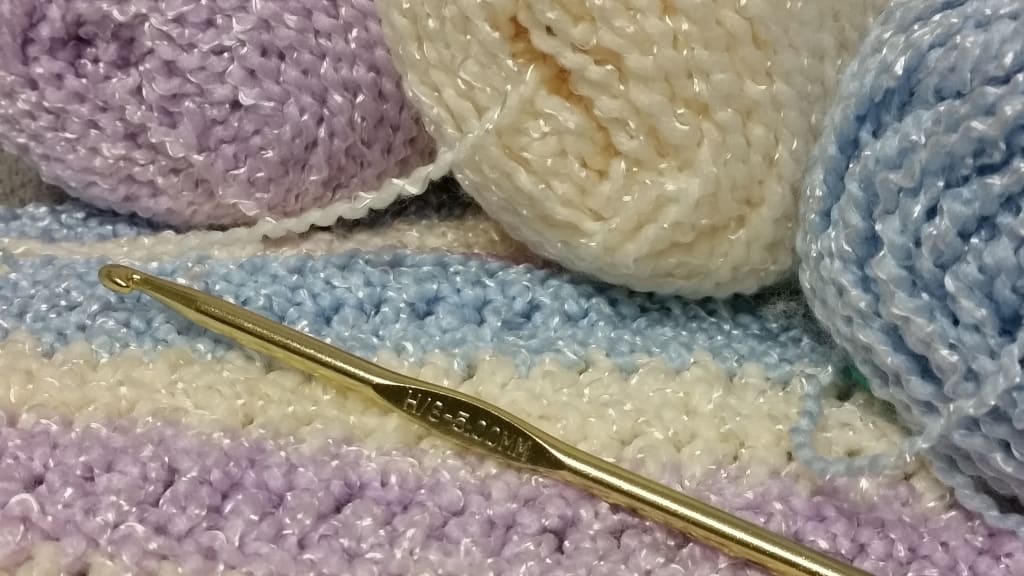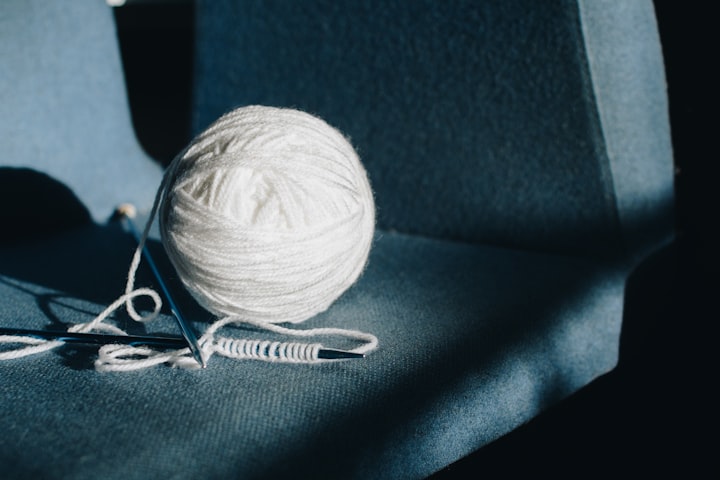Crochet Hook Construction
A Tool in Many Materials

“Crochet” comes from French and it means “to hook.” In Spanish, to say you are crocheting is, “tejer con gancho,” literally translated: to make fabric with a hook. This crochet hook is central to the art. It is not impossible to crochet without a hook, there is a technique called finger-crocheting. However, the hook makes it possible for different sizes, more consistent stitches and usually assists in completing projects more quickly than tying up (pun not intended, but quite appropriate) one’s fingers.
We will look at the hook as a whole and differences in the materials used to make it. Often, hooks are made from one solid piece. Some hooks have a silicone or otherwise softer handle to improve grip and comfort. The main portion is almost always a solid piece of material. The most common materials that crochet hooks are made of are steel, aluminum, plastic and wood. Let’s look at the pros and cons of each type of material.
While almost all the sizes can be made of the materials listed, one thing that should be noted is that those tiny hooks, those really small ones that are so small that they are sharp--those ones will be made of steel. Being so small, they need to be strong. I have wooden hooks that are 5 millimeters in diameter and sometimes I get nervous that I might break those if I have some difficult yarn. If those tiny hooks are not made of steel and you are working on a project (such as lace or a delicate filet piece), I would be extremely careful. I would still highly suggest steel ones should be obtained and used instead. Unless there are some titanium or carbon fiber hooks around, steel is the go-to material for those itty bitty doily-making tools. Speaking of carbon fiber and titanium, I did not list them in the list of common materials because they are not common! They may contain the strength to support the lace making hooks. These hooks are rare and expensive, but they do exist!
Aluminum is probably the most common for overall crocheting. Blankets, plushies, sweaters and shawls are all made in sizes that can be made with aluminum hooks. Some of the most widely available brands of hooks in America, Boye, Susan Bates, and Clover are made of aluminum.
These sizes can also be made with plastic and wood. Plastic is a less expensive alternative to the other materials listed. Regarding plastic hooks in the smaller sizes, I have not heard much positive, mostly that the smallest ones do snap and that the larger sizes feel too light as they are hollow on the inside. However, the lightness of the larger hooks--and we’re talking LARGER hooks--is also one of the positive features. These enormous hooks are used for blanket and afghan projects and those take a lot of time and a lot of yarn. The weight of the hook can become an issue if working on a project for hours and days at a time.
Finally, wood is also a common material used to make crochet hooks. Wooden hooks usually start around the sizes of US C (3.0mm), but below that, as mentioned before, hooks are made of steel. While US C is still small, the bamboo and rosewood are strong and often-used for these. There are some extremely elegant wooden hooks that are readily available for the general public. Large hook sizes are also available as wooden hooks, which is not unexpected, as bamboo is both strong and light. I have not yet had the pleasure of working with wooden hooks, but from what I hear, they get better the more they are used.
There are many options for crochet hook materials and while some of it depends on the project and hook size, much of it depends on personal preference! The best way to know what you like is to try many different kinds. Occasionally, knit and crochet groups will have events called “hook and needle tastings” where representatives from companies will bring samples of hooks and needles for the crafters to try out. As this article is being written in February of 2021, events such as these are on hold now as COVID-19 is still a consideration and not quite under control. Once events are happening again, I’m sure hook and needle tastings will also be organized, but probably with more sanitizer than before.
------
Disclosure: I only recommend products I would use myself and all opinions expressed here are my own. This post may contain affiliate links that at no additional cost to you, I may earn a small commission.
About the Creator
Rachel Pieper Decker
Displaced Minnesotan in Southern California.
Gamer, streamer, fiber arts enthusiast, Web3 dabbler, aspiring Notary Public
Connect with me: twitter.com/HyperZenGirl * twitch.tv/HyperZenGirl
Affiliate links: https://linktr.ee/HyperZen






Comments
There are no comments for this story
Be the first to respond and start the conversation.